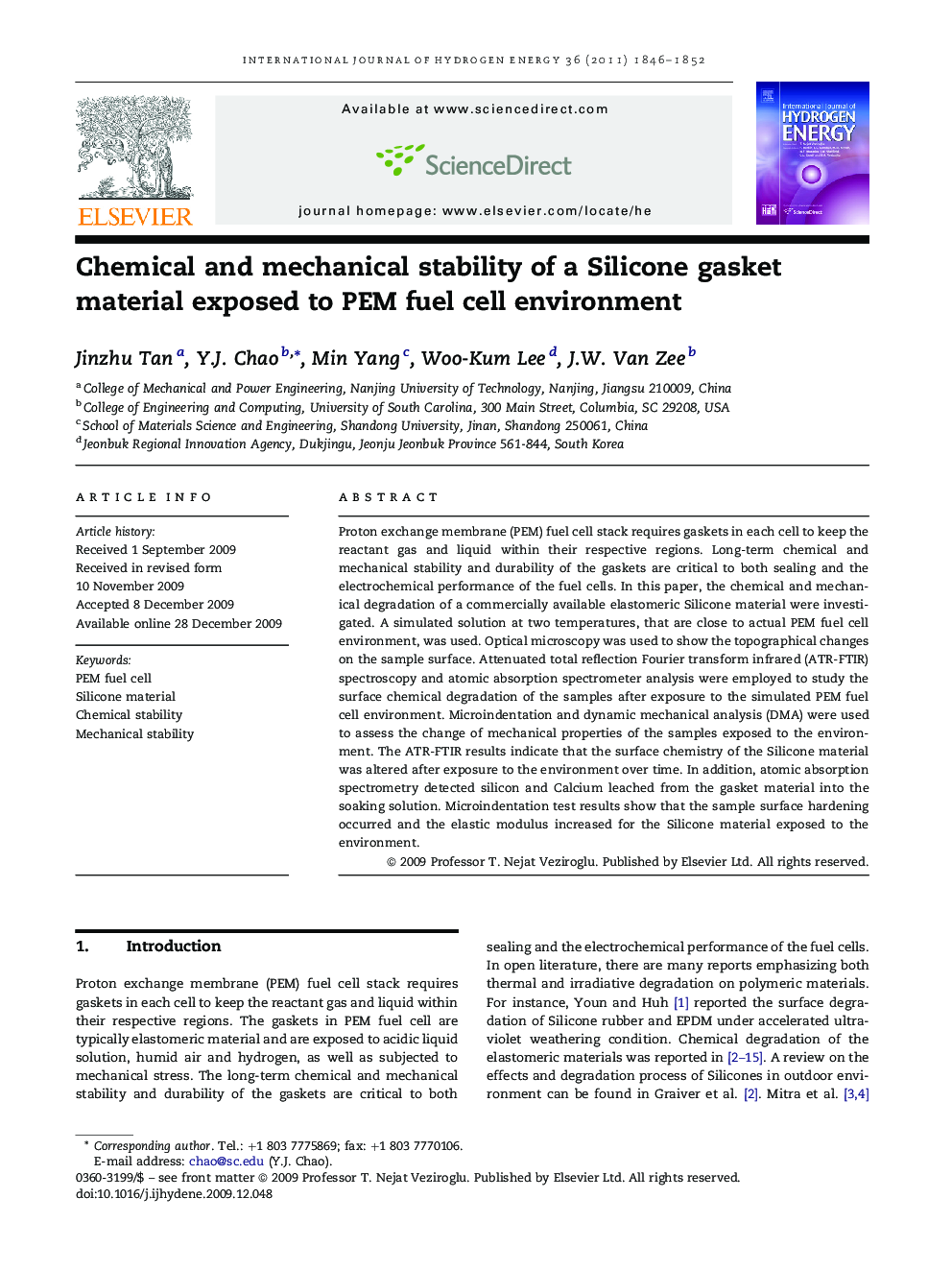| Article ID | Journal | Published Year | Pages | File Type |
|---|---|---|---|---|
| 1272353 | International Journal of Hydrogen Energy | 2011 | 7 Pages |
Proton exchange membrane (PEM) fuel cell stack requires gaskets in each cell to keep the reactant gas and liquid within their respective regions. Long-term chemical and mechanical stability and durability of the gaskets are critical to both sealing and the electrochemical performance of the fuel cells. In this paper, the chemical and mechanical degradation of a commercially available elastomeric Silicone material were investigated. A simulated solution at two temperatures, that are close to actual PEM fuel cell environment, was used. Optical microscopy was used to show the topographical changes on the sample surface. Attenuated total reflection Fourier transform infrared (ATR-FTIR) spectroscopy and atomic absorption spectrometer analysis were employed to study the surface chemical degradation of the samples after exposure to the simulated PEM fuel cell environment. Microindentation and dynamic mechanical analysis (DMA) were used to assess the change of mechanical properties of the samples exposed to the environment. The ATR-FTIR results indicate that the surface chemistry of the Silicone material was altered after exposure to the environment over time. In addition, atomic absorption spectrometry detected silicon and Calcium leached from the gasket material into the soaking solution. Microindentation test results show that the sample surface hardening occurred and the elastic modulus increased for the Silicone material exposed to the environment.
